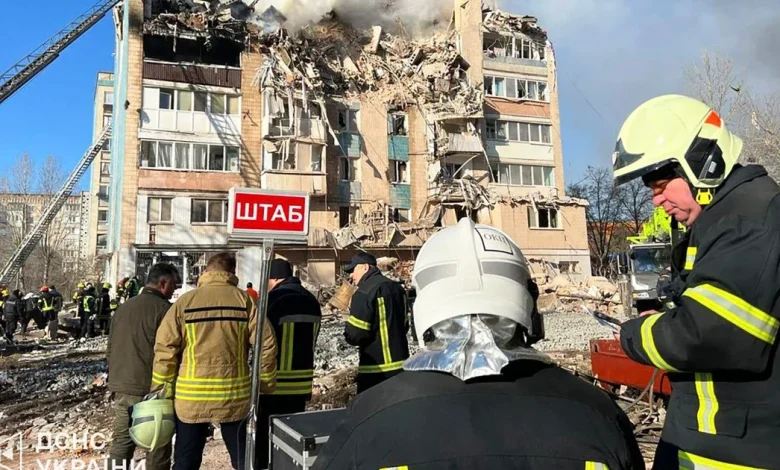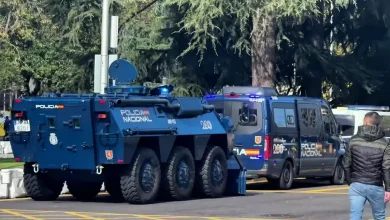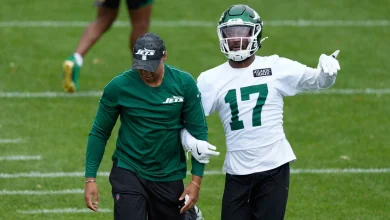President Trump approves plan for peace between Russia and Ukraine, senior administration official says

President Donald Trump this week approved a 28-point plan for peace between Russia and Ukraine that top administration officials have quietly developed over the last several weeks in consultation with Russian envoy Kirill Dmitriev and Ukrainian officials, a senior administration official told NBC News.
Trump’s special envoy, Steve Witkoff, Vice President JD Vance, Secretary of State Marco Rubio and the president’s son-in-law Jared Kushner were involved in formulating the plan, the official said.
“The plan focuses on giving both sides security guarantees to secure a lasting peace,” the senior official told NBC News. “It includes things Ukraine wants and needs to have a durable peace.”
The official would not outline details of a plan the official believes is still up for some degree of negotiation with the key parties involved. Axios first reported the existence of the plan.
Special envoy Steve Witkoff and Secretary of State Marco Rubio in Riyadh, Saudi Arabia, on Feb. 18.Evelyn Hockstein / AFP via Getty Images file
Three U.S. officials told NBC News that the framework for the peace deal still needed to be presented to the Ukrainians and that the timing of finalizing a draft of the plan coincided with the visit of an Army delegation to Ukraine.
“Ending a complex and deadly war such as the one in Ukraine requires an extensive exchange of serious and realistic ideas. And achieving a durable peace will require both sides to agree to difficult but necessary concessions,” Rubio posted on X on Wednesday. “That is why we are and will continue to develop a list of potential ideas for ending this war based on input from both sides of this conflict.”
The American delegation arrived in Kyiv on Wednesday morning with two missions for its meetings with Ukrainian officials: to discuss military strategy and technology and to help revive the peace process, according to two U.S. officials, a European official and a source close to the Ukrainian government.
Army Secretary Dan Driscoll was joined by the Army chief of staff, Gen. Randy George, and other top Army officials, Col. Dave Butler, an Army spokesperson, said in a statement, hours after Ukrainian police said at least 25 people were killed in heavy overnight Russian missile and drone attacks.
A U.S. official described the trip as a White House plan intended to “restart peace negotiations.”
Ukrainian emergency services evacuate an elderly resident from the site of a Russian strike on Kharkiv on Wednesday.Sergey Bobok / AFP via Getty Images
American efforts to revive peace negotiations appear to be gaining momentum, although the Kremlin has shown no sign of changing its terms for ending the war and it played down a media report that the United States was working on a 28-point peace plan.
Kremlin spokesperson Dmitry Peskov said at a news briefing that there were “no such plans” for Russia to meet Driscoll after his talks in Kyiv, indicating there had been little change since talks in Alaska in August.
A defense official said that Driscoll has been briefed on the 28-point plan but that is not the main focus of his meetings in Kyiv.
Ukraine did not take part in shaping the proposed peace plan, according to a source close to the Ukrainian government and a European official with knowledge of the matter. Ukraine was informed of the broad contours of the plan but was not briefed in detail and was not asked to provide input, the two sources said.
Ukrainian President Volodymyr Zelenskyy in Ankara, Turkey on Wednesday.Ozan Kose / AFP via Getty Images
Ukrainian officials view the timing of the proposal, coinciding with a damaging corruption scandal facing Ukrainian President Volodymyr Zelenskyy’s government, as no coincidence, the source close to the Ukrainian government said, and the officials see it as most likely an attempt by the Kremlin to take advantage of a potentially weakened Ukrainian leadership.
A Trump ally, Sen. Lindsey Graham, R-S.C., who has led on legislation to punish Russia for its actions in Ukraine, told NBC News he was not previously aware of the plan.
“I don’t know anything about it,” said Graham, who spoke to Trump on Tuesday evening. “But I will say this: I hope there’s no plan out there — no plan will work unless [Russian President Vladimir] Putin believes that we’re serious about continuing to provide higher end military aid to Ukraine.”
The U.S. delegation in Kyiv is discussing military matters, including air defense efforts against Russian drone and missile attacks on the country’s energy infrastructure, and mapping the front line to help a possible peace process, said the source close to the Ukrainian government and a European official with knowledge of the matter.
Previous diplomatic efforts led by Witkoff also excluded Ukraine and collapsed, as Kyiv and NATO allies viewed the proposals as lopsided in Moscow’s favor with little realistic prospect of resolving the conflict.
Russia has consistently demanded severe restrictions on Ukraine’s armed forces, prohibiting the country from joining the NATO alliance and barring the presence of Western troops to secure any peace.
The aftermath of a Russian airstrike on a residential building in Ternopil, Ukraine, on Wednesday.AFP via Getty Images
“The president has been clear that it is time to stop the killing and make a deal to end the war. President Trump believes that there is a chance to end this senseless war if flexibility is shown,” a White House official said.
Driscoll and his delegation arrived in the Ukrainian capital after an overnight Russian missile and drone attack on several Ukrainian cities.
After an apartment building was hit in the western city of Ternopil, the National Police of Ukraine said on Telegram that 25 people, including three children, were killed.
Sixty-six more people were wounded in the strikes, which targeted energy and transportation infrastructure, forcing emergency power cuts in a number of regions, said officials, who added that Russia launched more than 470 drones and 48 missiles.
The Russian Defense Ministry said Wednesday that it “carried out a massive strike with long-range, high-precision air- and sea-launched weapons” in response “to Ukraine’s terrorist attacks on civilian facilities.” It added that it had targeted “military-industrial facilities and energy infrastructure.”
The Kremlin has repeatedly said its only targets are linked to Kyiv’s war effort, but it has been pummeling Ukraine with near-daily drone and missile strikes that have killed and wounded civilians.
It has also targeted Ukraine’s energy sector in a bid to plunge the country into the cold and dark ahead of winter.
Energy infrastructure had been struck in seven Ukrainian regions, officials said Wednesday. Explosions were also reported in the western city of Lviv.
The full extent of the damage was not immediately clear, but restrictions were placed on power usage for consumers across the country, according to Reuters.
A damaged residential building after an overnight Russian airstrike in the city of Ternopil. AFP via Getty Images
In Ternopil on Wednesday, the upper floors of the residential building were torn away in the attack. Black smoke poured upward, while an orange glow burned though the haze from a fire in the tower block.
Zelenskyy confirmed that multistory residential buildings had been hit in the city, and said others may be trapped under the rubble.
He also urged allies to increase pressure on Russia to end its nearly four-year war in Ukraine, including by providing Kyiv with more air defense missiles.
“Every brazen attack against ordinary life shows that the pressure on Russia is insufficient. Effective sanctions and assistance to Ukraine can change this,” he said on X.
Elsewhere, Poland scrambled Polish and allied aircraft and temporarily closed airports in the southeastern cities of Rzeszów and Lublin as a precaution to safeguard the airspace over the NATO member state, which borders western Ukraine.





